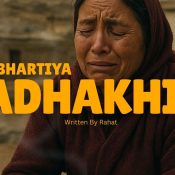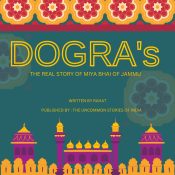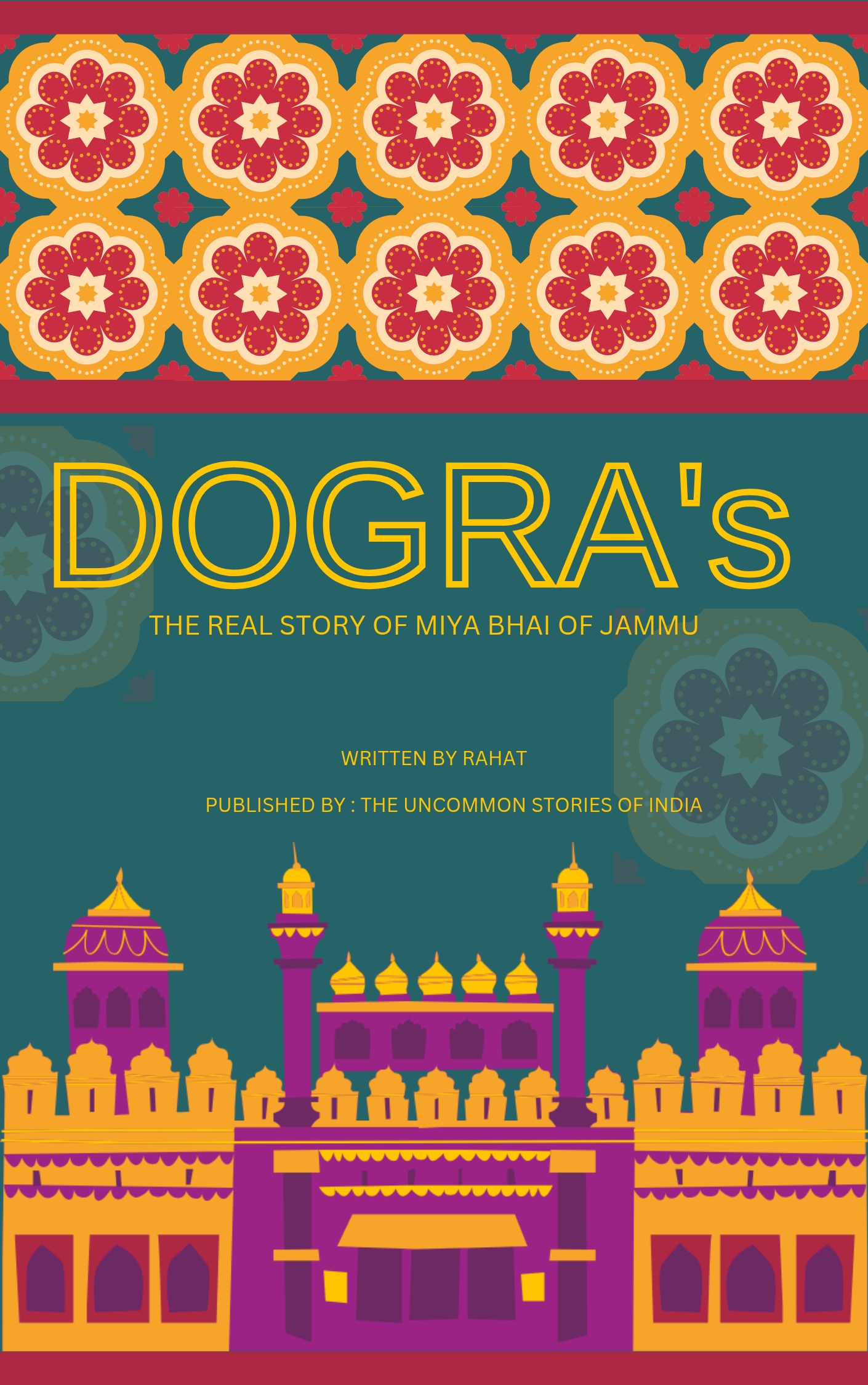
DOGRA’s
DOGRA’s : The Real Story Of Miya Bhai Of Jammu Written By Rahat
Published By :The Uncommon Stories Of India
The Real Story Of Miya Bhai Which Hold His Dogra Culture & Heritage Through His Family Tradition
“Heritage is not about resisting the future; it is about carrying the soul of the past into tomorrow.”
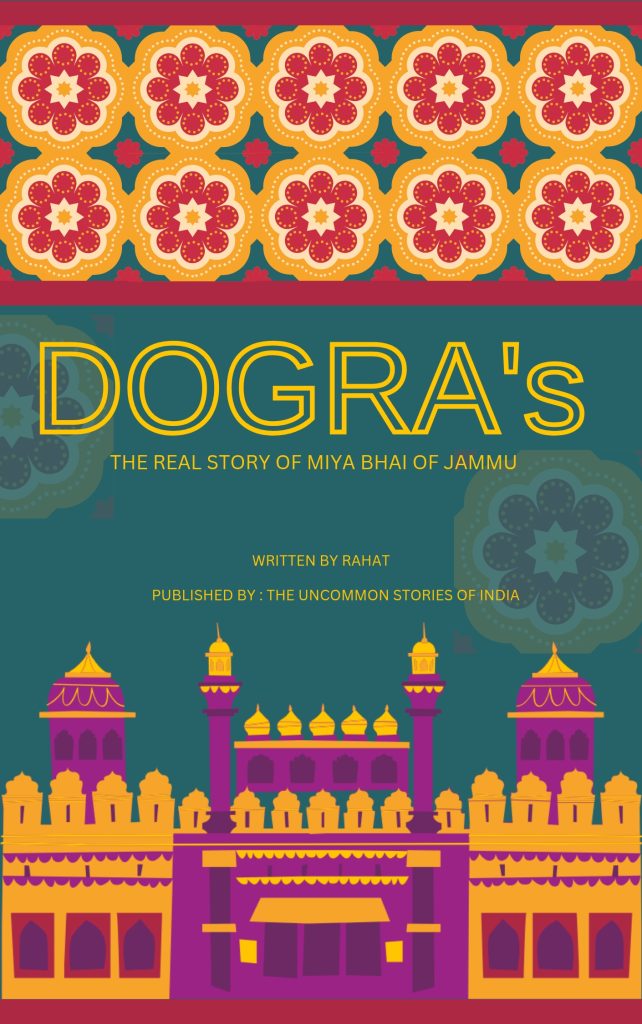
Pir Mitha, nestled in the heart of Jammu, has always been more than just a locality. Its narrow lanes, stone pavements, and centuries-old houses carry stories that refuse to die. Here, faith is not divided, festivals are not owned by one religion, and every breath carries the fragrance of Dogra soil. Amidst this setting lived the Miya family, a Muslim household that had guarded and celebrated Dogra culture since the era of Maharaja Hari Singh.
The family’s story began with Miya Bhai, a man of quiet dignity. His father had been a craftsman in the Maharaja’s darbar, stitching ceremonial attire for nobles and soldiers alike. Miya Bhai inherited not just the skill of the needle but also the pride of preserving heritage. His hands carried magic; they could turn plain fabric into a piece of history. His artistry went beyond tailoring—it was storytelling with threads.
What made his journey extraordinary was his wife, Bibi Sahiba, who was known across the land as a visionary designer. She was not just a seamstress but a creator of identity. Her Dogra suits, lehangas, and shararas became iconic in the royal courts. Maharaja Hari Singh’s queens and princesses wore her creations during weddings and festivals, often praising her sense of grace and dignity. Nobles from distant valleys sent messengers to Pir Mitha just to fetch a lehanga designed by her.
It was in the bustling courtyards of the Maharaja’s palace that their artistry found its zenith. Whenever there was a royal function, Miya Bhai and his wife would be summoned. They would arrive with bundles of embroidered cloth, trays of gold-thread work, and patterns inspired by the mountains, rivers, and temples of Jammu. It was said that Maharaja Hari Singh once paused at a wedding procession and remarked, “The soul of my kingdom shines not in jewels but in the stitches of Miya Bhai’s family.” Those words became an eternal blessing for them.
In their modest home at Pir Mitha, culture lived as naturally as breath. The call of the azaan from the nearby mosque mingled with the bells of the temple; Bibi Sahiba would pause her work to send sweets to Hindu neighbors during Navratri, while they, in turn, sent gifts to her during Eid. For the children of the neighborhood, the Miya household became a place of stories and color—where they could see the grandeur of Dogra dresses up close and touch history in every fold of fabric.
Their son, Raza Miya, grew up in this rich environment. From a young age, he was taught that the loom and the embroidery frame were not just tools but guardians of heritage. Miya Bhai would often tell him, “Beta, our work is not about cloth. It is about memory. One day, people may forget the songs and the dances, but when they wear these clothes, they will remember who they are.”
Raza absorbed these lessons deeply. He learned not only the art of stitching but the spirit behind it. By the time he reached adulthood, the political winds of the state had changed. The Maharaja’s rule had ended, and the princely aura of Jammu was fading. Yet, even amidst uncertainty, the Miya family did not abandon their craft.
It was during this time that Raza’s mother, Bibi Sahiba, began training young women of the neighborhood. Hindu and Muslim girls sat together in their courtyard, learning how to embroider flowers, motifs, and borders. Some were preparing for marriage; others simply came to learn. In her eyes, every girl deserved to carry the pride of Dogra tradition, irrespective of her background. Raza often recalled how his mother would say, “These threads do not ask what name you carry; they only ask whether you respect them.”
Raza carried this philosophy into his adulthood. Unlike many of his peers, who eagerly embraced Western shirts, trousers, and suits, Raza proudly wore his kurta, pyjama, and turban. His friends sometimes teased him, but he would smile and reply, “Clothes may cover the body, but only heritage covers the soul.”
He married a woman who shared his love for tradition. Together, they turned their Pir Mitha home into a thriving workshop. Families from across Jammu—be it from Rajouri, Kathua, or even Udhampur—visited them for wedding outfits. For every bride, they prepared a lehanga that was not just attire but a dream woven in silk and zari. For every groom, they stitched an achkan that carried the pride of Dogra warriors. Slowly, the Miya name became synonymous with authenticity.
But time tested them. The flood of modernity, the rise of Western consumerism, and the easy availability of factory-made dresses threatened their legacy. By the late 20th century, Dogra attire was becoming less common at festivals and weddings. Raza struggled. There were moments when orders were few, and relatives advised him to “modernize.” But he stood firm. “If we abandon tradition, who will guard it? If we forget our soil, who will remind the next generation of its fragrance?”
It was during this struggle that his son, Arshad Miya, grew up. Unlike many children of his time, Arshad was not seduced by the glitter of malls or the glamour of Western clothes. His heart beat for the stories his father and grandparents told him. He would often sit in the corner of the workshop, watching the needles dance over fabric, listening to his father explain the difference between a Dogra motif and a Kashmiri one.
“See, beta,” Raza once told him, holding up an embroidered dupatta, “this flower is not just decoration. It is the chinar leaf, symbol of our land. When a bride wears this, she is carrying the blessing of our valleys. Remember this—every stitch is a prayer.”
Arshad remembered. He grew into a young man who wore tradition with pride. When his classmates in college wore jeans and leather jackets, he walked in with a crisp kurta and turban. Some laughed at him, some admired him, but Arshad never wavered. He would simply smile and say, “Western clothes are for comfort. Our clothes are for identity. Which is greater?”
Under Arshad’s energy, the family’s mission gained new wings. He began organizing exhibitions, inviting people from across Jammu to witness the artistry of Dogra dresses. He collaborated with cultural organizations to host Dogra fashion shows where brides walked the stage in traditional attire. Young people who had once dismissed tradition as “old-fashioned” now saw its beauty anew.
The Pir Mitha home became more than a workshop; it became a cultural hub. Walls adorned with framed photographs of the Maharaja’s court, shelves lined with preserved shawls, glass cases holding lehangas worn by queens decades ago—all these created an atmosphere of living heritage. Visitors from Delhi, Punjab, and even abroad came to see the family’s collection. Some called it a “museum,” but Raza would gently correct them: “No, this is not a museum. Museums preserve what is dead. We preserve what is alive.”
The journey was not without pain. There were years when business was lean, when Western outfits dominated wedding markets, when young brides hesitated to choose traditional lehangas. There were days when Arshad felt disheartened, but every time, his father reminded him of their purpose. “We are not in business for profit, beta. We are in this for the soul of our land. One lehanga may not give us riches, but it keeps our culture breathing.”
And so, they continued.
Today, when one walks into Pir Mitha, amidst the chaos of markets and honking vehicles, there is still a home where time seems to slow down. Inside, you will find Arshad teaching a group of young girls how to embroider. You will find Raza sitting by the window, carefully inspecting a half-finished sharara. You will hear the hum of sewing machines, the laughter of apprentices, and the stories of heritage being passed from one generation to the next.
Arshad dreams that his children and their children will carry this thread forward. He often tells them, “You may become doctors, engineers, or whatever you wish. But never forget this needle. Because through it flows the blood of our history.”
In a world rushing toward Western modernity, the family of Miya Bhai remains rooted in Pir Mitha, proving that heritage is not fragile but resilient. Their story is not one of resistance but of balance—of saying no to blind imitation and yes to proud preservation.
From Miya Bhai’s artistry in the Maharaja’s court to Bibi Sahiba’s legendary designs, from Raza Miya’s quiet determination to Arshad Miya’s spirited leadership—the family has stitched more than clothes. They have stitched generations together.
And as the azaan rises from the mosque near Pir Mitha and the temple bells echo in harmony, one truth remains eternal: culture survives not in books or monuments, but in families who choose to carry it, stitch by stitch, into the future.
This is the story of the DOGRA’s—a story still being written, one thread at a time.
Published By :The Uncommon Stories Of India
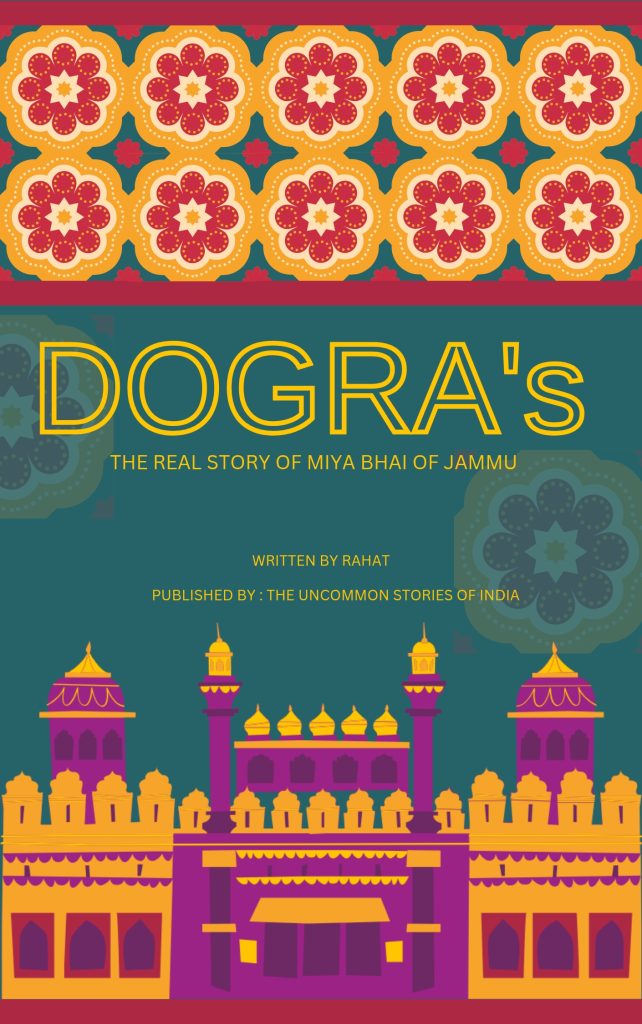
All Categories
Recent Posts
The Bhartiya Ladhakhi:Echoes From The Roof Of The World
DOGRA’s
The Unheard Question: What Next After The Floods Of 2025 (Part 2)
07316984833
contactus@tucsi.org

